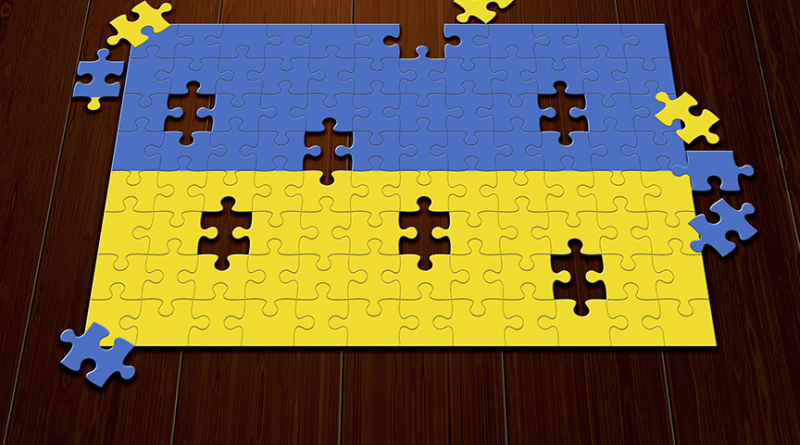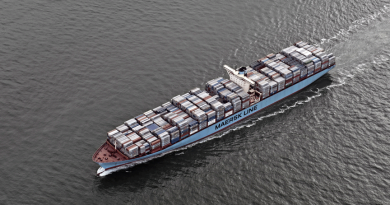An EU reparations loan is the right way to help Ukraine
Charles Lichfield is the Director of Economic Foresight and Analysis and the C Boyden Gray Senior Fellow at the Atlantic Council’s GeoEconomics Center, and Nicolas Véron is a Senior Fellow at Bruegel
Can the full amount of immobilised Russian sovereign assets be offered to Ukraine, without confiscating the money outright? EU finance ministers discussed the issue on 10 October, with Stephanie Lose, economic affairs minister of Denmark, which currently chairs EU ministerial meetings, saying “not finding new financing for Ukraine is definitely not an option,” and that EU countries would continue work on a European Commission plan for a loan to Ukraine based on the Russian assets.
That plan has not been made public but was previewed by European Commission President Ursula von der Leyen a month ago: “With the cash balances associated to these Russian assets, we can provide Ukraine with a reparations loan. The assets themselves will not be touched. And the risk will have to be carried collectively. Ukraine will only pay back the loan once Russia pays for the reparations.”
Our interpretation of how the plan might work is based on media reporting and conversations with participants. When Russia invaded Ukraine in February 2022, its central bank held securities at Euroclear Bank, the leading international central securities depository, based in Brussels. These were quickly immobilised by sanctions and have mostly come to maturity since then.
Consequently, the Bank of Russia has accumulated deposits at Euroclear Bank, denominated in over ten currencies and estimated at around €180 billion. It cannot move this cash and is not entitled to interest on it, given Euroclear Bank’s contractual terms.
For two years after the invasion, Euroclear earned interest income on the trapped Russian cash, with one quarter going to the Belgian state as corporate income tax. Since early 2024, the EU has confiscated nearly all Euroclear’s associated after-tax income.
When Russia invaded Ukraine in February 2022, its central bank held securities at Euroclear Bank, the leading international central securities depository, based in Brussels. These were quickly immobilised by sanctions and have mostly come to maturity since then
In December 2024, this stream became the basis of the Extraordinary Revenue Acceleration (ERA) loans to Ukraine, totalling $50 billion, raised by the EU with the United States, United Kingdom, Japan and Canada. If the Commission’s reparations loan mechanism is implemented, the EU is expected to repay all ERA lenders, including itself.
The reparations loan – also supported by German Chancellor Friedrich Merz – would involve Euroclear lending an equivalent amount to the immobilised assets, say €180 billion (in the same currencies), to a European entity. This may be the EU itself or an ad-hoc special-purpose vehicle – we refer to it as ‘Europe’.
The zero-interest loan would not cost to Euroclear since it no longer gains interest income on the cash. Europe would reimburse the ERA loans and lend the rest – about €135 billion – to Ukraine.
If Russia eventually pays reparations, Europe will use these to reimburse Euroclear. Because this is uncertain, Euroclear’s loan would be backed by guarantees from participating member states, ideally all EU countries.
That would represent a significant, albeit contingent, new commitment but is worth the effort. If Ukraine loses the war, the subsequent financial costs – and other tragic consequences – are likely to be far greater for Europe.
State guarantees for the loan would probably require approval from national parliaments. Euroclear would also need assurance that the block on Russia’s cash will remain for the duration of its loan to Europe, because otherwise it would be at risk of having to borrow the difference at a loss.
EU leaders have already said Russian assets should stay immobilised until reparations are paid, but putting this reassurance into law would allow the EU to escape the need to renew the immobilisation every six months – a process that requires unanimity.
How the EU will get there is not yet entirely clear, but we assume the willing capitals will find a solution. EU leaders will further discuss the reparations loan at a summit on 23-24 October.
In our understanding, Euroclear will be reimbursed even if future diplomacy results in a settlement in which Russia does not pay reparations. But the loan mechanism would be a powerful incentive to European countries to insist that Russia must pay reparations, and to use their leverage accordingly. This may be why the reparations loan idea has been met with furious pushback from Russian propagandists.
Meanwhile, by guaranteeing the integrity of international reserves held in Europe and of Euroclear as a securities depository, the scheme would avoid undermining the international monetary order. It achieves the best possible balance between the many parameters that have shaped the debate on Russia’s immobilised reserves.
If this ingenious scheme fails, there will be alternatives for EU provision of support to Ukraine, but they will be less good. All Europeans should thus support a well-designed reparations loan.
This article is based on a Bruegel First Glance.




